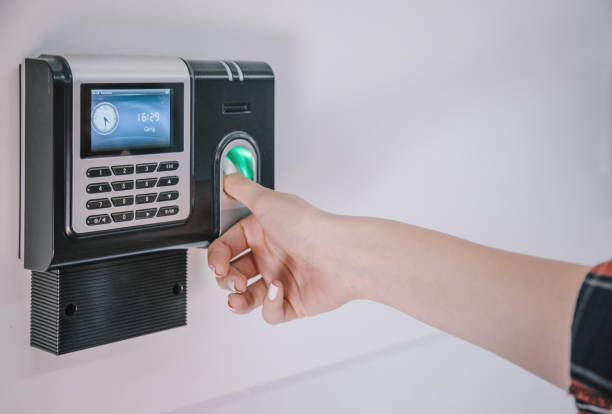When the government of Uganda introduced the Teachers’ Effectiveness and Learners’ Achievement (TELA) system in March 2023, everyone expected an improvement in teachers’ attendance.
TELA is a time-on-task performance management system designed to monitor the real-time attendance of teachers and headteachers using a smartphone with Global Positioning System and Biometric features.
The system works by allowing teachers to clock-in the biometric machine using any of the three parameters- the facial recognition, finger print or the code.
However, a survey conducted by The Albertine Journal in government-aided secondary schools, as well as primary schools, in Hoima and the neighboring Kikuube districts, reveals that many institutions, following the example set by Makerere University, have rejected the biometric staff attendance management system, signifying resistance to the anticipated change.
At Duhaga Secondary, situated two kilometres away from Hoima City Central Business District (CBD), the teachers used to clock-in their times upon reporting to school.
According to a reliable source, this only facilitated their deceitful tactics, as it was easy for one teacher to clock-in for the rest of the absent staff members.
“When the Head Teacher restricted clocking-in to using facial recognition, teachers resorted to clocking in during the morning, and after their lessons, they would leave to attend to other businesses until returning in the evening to sign out at 5:00 pm,” the source, added.
The school Head teacher, Godfrey Mwesigwa, handed the biometric machine to the Director of Studies (DOS) as it was also infringing on his liberties.
Eventually, the machine disappeared without a trace. Mwesigwa confirmed that on October 9, 2023, at around 9:00 am, they discovered the absence of the said machine from the office.
Subsequently, a case of theft was opened at Hoima police station under reference number SD REF 28 20/24/10/2023 by the head of the Information Communication and Technology department, Marvin Bukenya, on October 24, 2023.
Mwesigwa attributed the delay in reporting the case on the pretext that the machine had been misplaced and would be found shortly.
He is quick to highlight challenges stemming from the lack of data provided by the government upon the delivery of the machine, which was inactive, posing difficulties for schools in sustaining data purchases.
Hoima City’s Principal Education Officer, Johnson Kusiima Baingana, advised the school to submit a letter to his office, attaching the police report, and to correspond with the Directorate of Education Standards in Kampala through his office.
However, he indicated limited assistance beyond forwarding their letter, citing direct government dealings with schools during implementation and uncertainty regarding replacement possibilities due to potential donor funding of new initiatives in the education ministry.
He emphasised the potential of the aforesaid system to enhance teacher effectiveness but lamented the inadequate funding for secondary schools.
At Kitara Secondary School in Hoima City, one kilometre away from the CBD, the Head Teacher, Patrick Zahura, disclosed that their biometric machine had stopped working in September 2023.
The school is now proposing to purchase Closed Circuit Television (CCTV) cameras to monitor real-time attendance and track timetable implementation in the classroom.
Zahura told The Albertine Journal that efforts to report the failure of the biometric machine to the Ministry of Education and Sports were made; however, there was no constructive response.
The TELA system also includes timetables and the teaching load that a teacher must accomplish every day while in school.
Teachers who are found to have missed lessons without explanation risk dismissal from service if they fail to register their arrival and departure from the workstation.
Dr. Ezra Suruma, the Head of the Delivery Unit in the Prime Minister’s Office, said upon the delivery of the biometric machines in schools and health facilities, civil servants were to start earning based on the number of days they worked in a month, as opposed to the current guaranteed monthly salary.
From the remarks made by Suruma, one expected the vice of absenteeism by teachers in schools to reduce greatly but in vain.
A source cited salary disparities between the Arts and Science Teachers as a key impediment of TELA implementation, claiming that it has continued to make teachers uncomfortable in the staff room and hence some leave school before time.
A science teacher with a degree earns a net pay of sh2,800,000 and a diploma holder sh1,600,000.
An Arts teacher with a degree earns a net pay of sh800,000, new entrants sh750,000 and a diploma holder sh600,000 with new entrants earning sh500,000.
Some teachers allege that most of the science teachers are young (fresh graduates) and arrogant and so it’s painful for an ageing arts teacher who has served for more than 10 years to sit in that staff room where young boys cannot tame their language which disrespects the arts teachers.
Despite the new curriculum, teachers have continued to be idle in schools. According to the old curriculum, diploma teachers in Arts had a load of 24 lessons/periods per week as degree holders had a load of 18 lessons and the lessons were expected to start at 8:00am and end at 5:00pm
The diploma science teachers have a load of 20 lessons and the graduates 16. The new curriculum demands all teachers to have 14 lessons per week delivered between 8:00am to 2:00pm. And the remaining time is meant for the Directorate of Industrial Training (DIT) project/assessment.
The poor internet coupled with low levels of computer literacy among teachers such as at Munteme Fatima College in Kikuube district has continued to render the biometric system less effective.
The school reportedly resorted to register in the attendance book after they failed to grasp the workings of the biometric TELA machines.
How TELA works elsewhere
Research conducted in Ghana in 2009 showed that the effectiveness of the Biometric system is very dependent on the strength of and speed of the Global System for Mobile communication (GSM) network technology adopted.
Though Uganda’s digital vision is directed towards providing an overarching framework that responds to the national vision 2040, a research conducted by Research ICT Africa (RIT) between 2017 and 2018 around 10 African countries showed that, Uganda has one of the lowest 14% internet penetration rates after Mozambique’s 10% and Rwanda’s 9%.
The teachers’ welfare has not yet been prioritised by the Government. Many Government schools up to now lack staff quarters and this has left no room for teachers to keep at the station hence looking for side hustles to cover up on rent.
After improving on the rate of internet penetration and the working conditions of teachers, the biometric system in Ghana has been able to reduce the rate of absenteeism from 27% to 11%.
In Kenya, the system has helped to clean the ministry of education payroll through removing ghost workers.
The biometric system in Uganda will only gain relevance if the government is willing to solve similar issues pressing the education sector, commentators say.
According to data, teachers at 12,557 government-aided primary schools are required to register their attendance biometrically.
The ministry also rolled out the electronic inspection tool for schools to promote efficiency and timely monitoring of academic institutions.
France Atima, the director of education standards at the education and sports ministry was recently quoted in the media as saying: “the biometric system has reduced the paper burden and has improved on real -time reporting, besides systematically analysing school data.”


